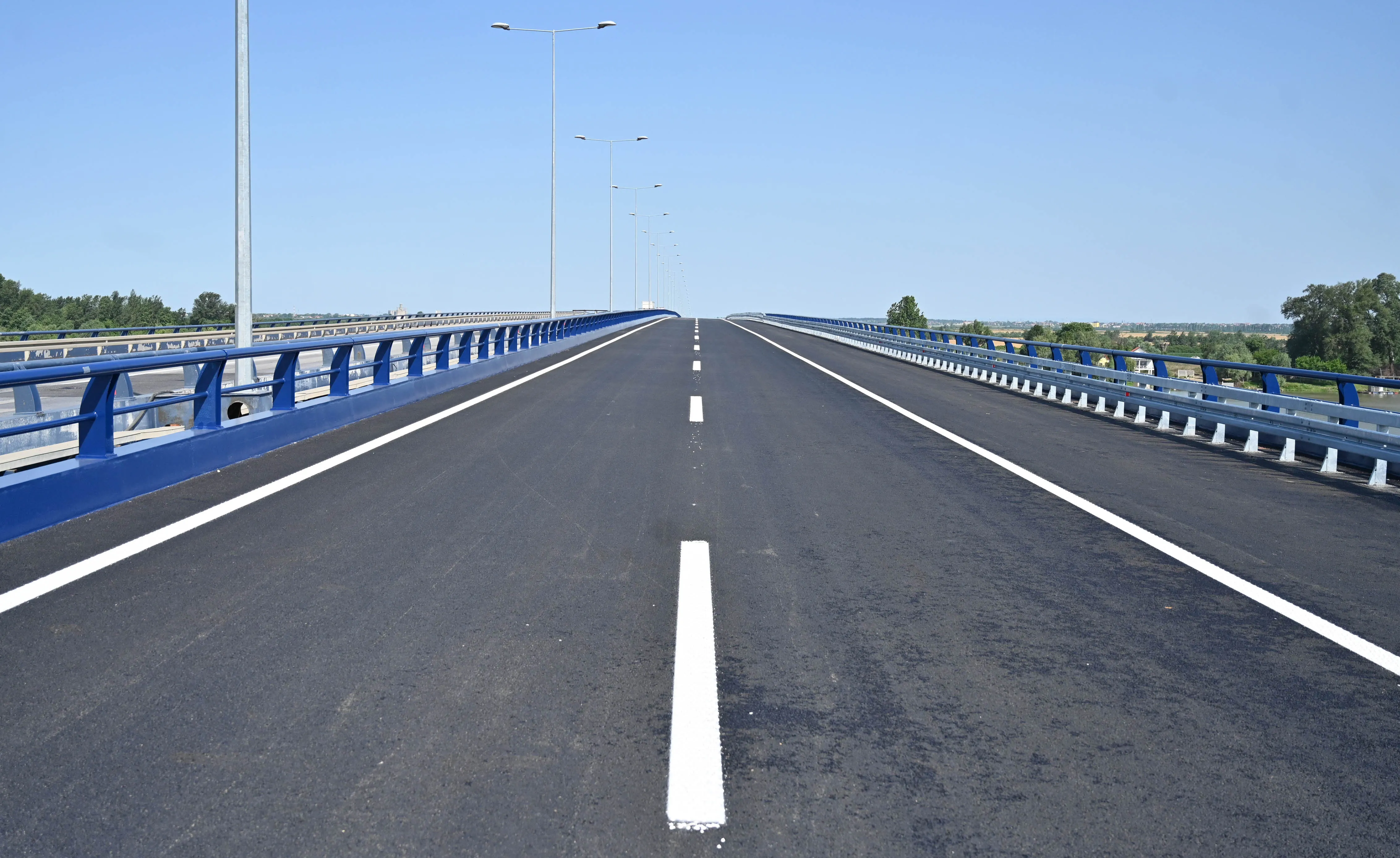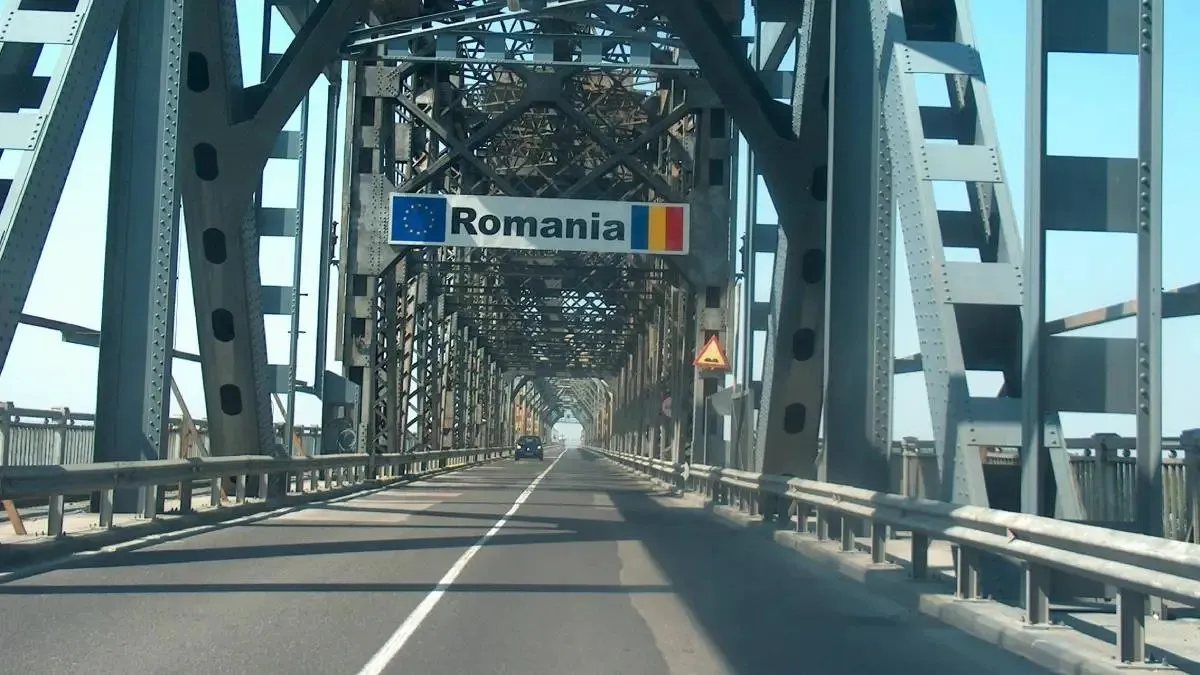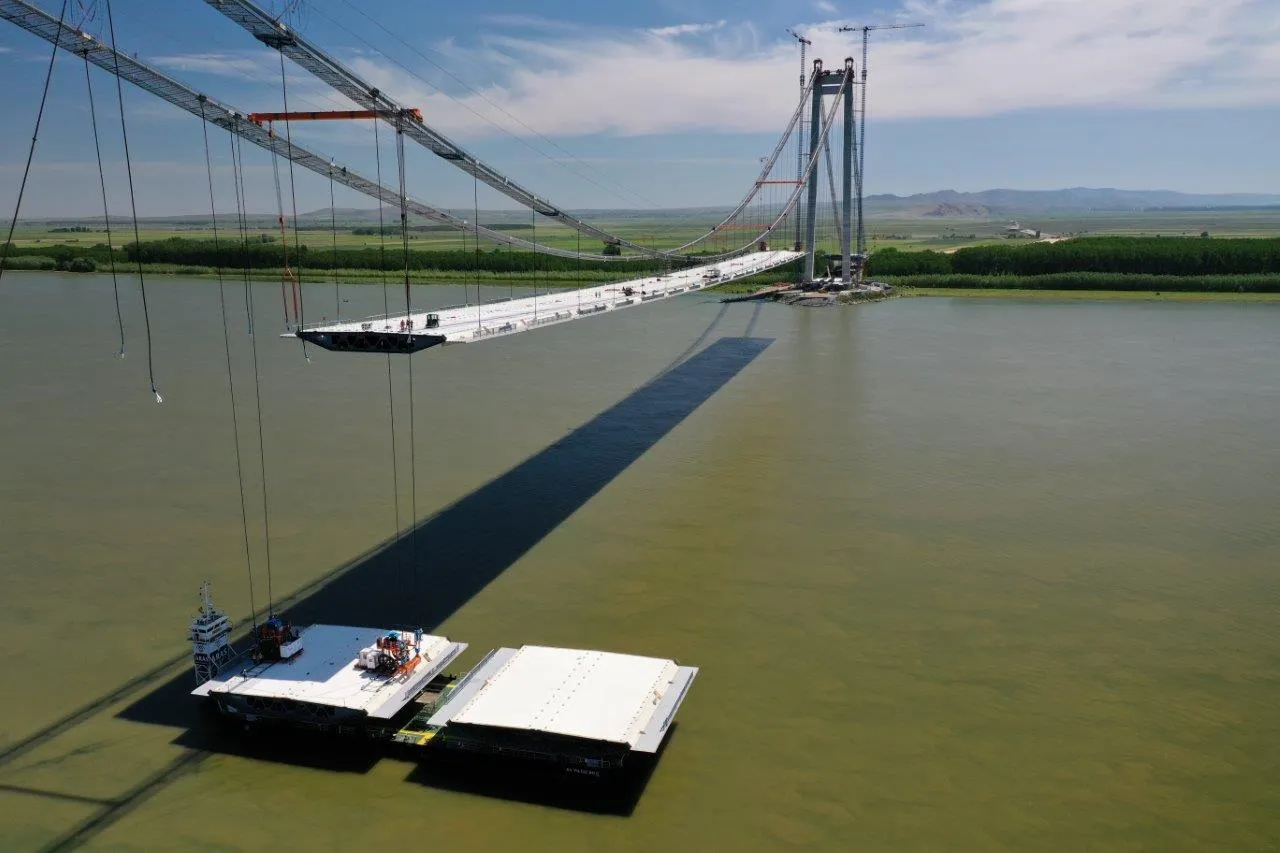
Serbia has completed another bridge as part of a major bypass around the capital city Belgrade and which is part of the pan-European route E-75.
Zorana Mihajlovic, Serbia’s minister of transport and infrastructure, officially opened the remaining two lanes of the four-lane US$40.8 million Ostružnica Bridge over the Sava River, near the suburb of Ostružnica.
The 2km long bridge is the largest structure of all the bypass’s bridges and tunnels and is part of the 47.4km Dobanovci-to-Bubanj Potok section (officially section B).
The steel deck sections, some up to 80m long, were built in a nearby shipyard and barged to the site. The last steel deck section – 65m long and weighing around 400 tonnes - was pulled up into place from a barge on the river in December.
The 69km Belgrade bypass includes around 45km of the A1 motorway. Construction of the bypass started in 1990 with progressive openings of sections since then.








